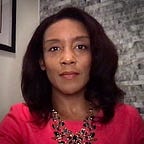Revisited: The Things We Don’t Say and the People We Don’t See, Now Hurricane Isaias
Just under a year ago, I wrote an article “The things we don’t say and the people we don’t see: Hurricane Dorian and the Bahamas as the weeks go on…” expressing my shock and sadness at the casual neglect of communities of color in post-disaster distress. I was reminded of it because, as I write another Hurricane, Isaias, has hit the Bahamas. It also impacted Puerto Rico, another island community (populated with people of color) that has struggled with repeated catastrophic events in the last three years and heads for South Florida. Despite the daily protests for dignity and civil rights on U.S. streets, the cloak of invisibility has not been lifted from these communities when it comes to delivering care. Searching for a simple update about the status of the Bahamas, I had to sift through four pages of “Google” results to learn that between 4-8inches of rain had fallen, roofs torn from homes that had likely just been repaired or still in a state of repair from Dorian and there were overturned trees and other damage. Most of the reporting told the Bahamians’ story in the context of someone else’s discomfort, “Hurricane Isaias slams Bahamas, heads towards Florida Coast” was the Miami Herald headline. U.S. News offered “Hurricane Isaias Churns through Bahamas as Florida Prepares”. Each story proceeds to discuss the preparations Florida is making to ensure the safety of its citizens and property, with no further discussion of the plight of of the poorer, more disaster vulnerable Bahamians than a mention of the storm’s location and status.
Stories I found which depicted people of color, or Black people in particular, were of them making preparations before the storm alongside photos of others. Most of the search results indicate that the habit of news outlets depicting the poor and people of color as instruments of their own demise has not changed. There were photos of dark skinned people in COVID-19 masks, reminding us of the confluence of the pandemic and hurricane season but not without commentary about the correctness of said mask wearing. Another showed two Black women in Miami enjoying the early storm surge. Unlike when white male surfers do the same, there was a tone of disdain. ‘Disdain’ is the word I used last year when discussing the attitude towards certain communities in disaster response. It still holds.
Here is some of what I originally wrote. I wish the images were different, that the societal attitude was not the same. “It’s approaching two months since Hurricane Dorian swept into and stalled over the Bahamas, leaving more than a billion pounds of debris and an unknown number of scattered lives in its wake. It came a little under two years after Hurricane Maria devastated Puerto Rico, sharpening that island’s descent into chaos. But Dorian was different. In Puerto Rico, the response was botched and public discourse uncivil. With respect to the Bahamas, the global silence was and still is deafening.
When confronted with disparities in emergency response and delivery of services in poor communities of color, we talk about communications, outreach and — after the damage is done — insert the oversights into the proverbial “lessons learned” documents. What we don’t say is that we as a society often ignore or are disinterested in the struggles of black and brown people. As written in the Center for American Progress article “America’s Sordid legacy on Race and Disaster Recovery” after Hurricane Maria, one in 10 victims reported receiving little or no recovery assistance. Post Harvey, black and Hispanic residents were more than twice as likely as their white counterparts to report economic shock and not receive assistance. According to the Kaiser Family Foundation and nearly 15 years on from Katrina, less than 40% of residents of the mostly black Lower Ninth ward were able to return home.
According to the CIA World Factbook, 90.6% of the population of the Bahamas is of African descent. That does not count the thousands of displaced Haitians living on the islands undocumented. Abaco, the hardest hit island and large harbor, played a particular role in the Transatlantic Slave Trade as a harbor of freedom for Africans. Before Dorian, today’s Abacos were a trade and agricultural center whose population included the descendants of these people and others coming to seek work. It wasn’t a splashy tourist destination designed to inspire our imaginations. Structures and livelihoods were simple and ripe for devastation when the day came. When Dorian arrived, we couldn’t note the lives of the people who lived there. This existence held little meaning on the world stage until it was depicted in Pulitzer-worthy images of destruction and sorrow. Harkening back to images and reporting from Katrina, there were reports of Bahamians asking “Where is our government?” While Bahamian officials defend the slow response and calls for help, most agree there was a lack of capacity to handle an event of that magnitude. It is a member of the British Commonwealth, yet the only official voice that took a moment from the Brexit debate to note the suffering of the Bahamians was the Queen in a single address. United States agencies and nonprofit organizations provided substantial assistance in the response, but that work was overshadowed by the President’s messaging about “bad people.” Meanwhile, dark skinned people struggling for survival covered my news feed, captioned with disinterest and disdain…” This is not “America’s Sordid History”, nor is it world history. This is a habit that needs to be broken.
References:
Center for American Progress, America’s Sordid History on Race and Disaster Recovery https://www.americanprogress.org/issues/race/news/2018/04/05/448999/americas-sordid-legacy-race-disaster-recovery/
UNICEF Hurricane Dorian Situation Report from October 2019
Hurricane Isaias Churns Through Bahamas as Florida Prepares
Hurricane Isaias Churns Through Bahamas as Florida Prepares
https://www.miamiherald.com/news/weather/hurricane/article244648377.html
